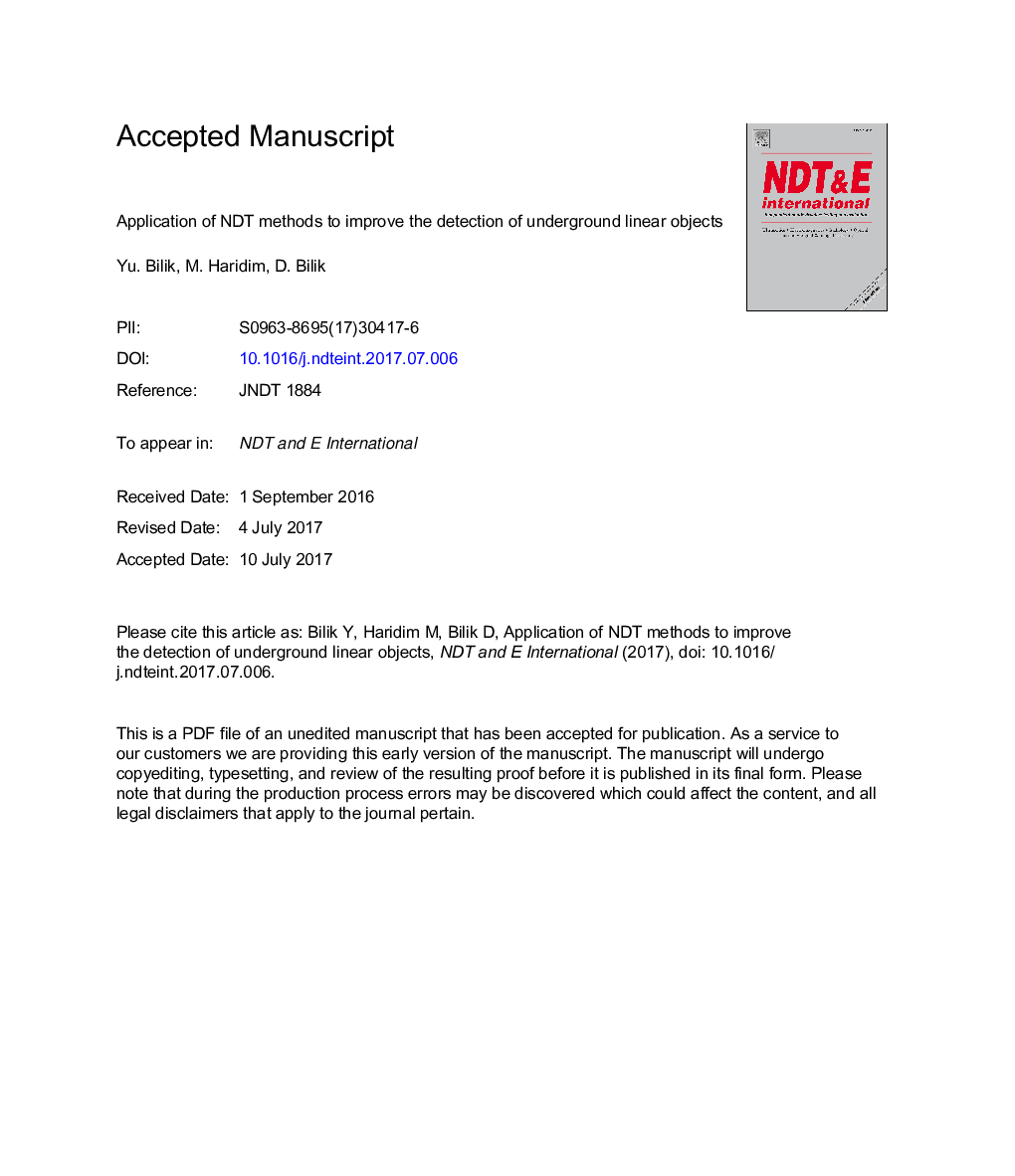| Article ID | Journal | Published Year | Pages | File Type |
|---|---|---|---|---|
| 4925157 | NDT & E International | 2017 | 27 Pages |
Abstract
Identification of underground objects and rectilinear discontinuities such as tunnels, tubes etc. is quite complicated. This is due to the fact that their width is quite small compared to the cross-section of ground penetrating radar (GPR) beams. This implies low reflectivity and hence very low signal-to-noise ratio (SNR) per scan. In this paper, we propose a new method for improving the SNR of remote sensing devices such as GPR, that use electromagnetic (EM) waves for detection of underground objects. The proposed method for improving the detectability of small-width objects is based on measuring the anisotropy of soils, in a similar fashion as in non-destructive testing methods. The proposed method performs 'orthogonal' scans of a parcel of the tested soil, with subsequent processing of the received signals using a special algorithm. No 'progressive scan' is required. Mathematical expressions for calculation of SNR are derived in a general form. The performance of the proposed method is investigated by simulations of real cases, when the reflected signal from the object is 'drowned in the noise'. Numerical simulations of the investigated cases show that SNR can be increased from 10 dB up to several 10's dB, compared to the traditional method of progressive scanning of the soil under test. It is shown that the presented version of the orthogonal scanning method can yield simultaneous improvement of both SNR and selectivity. The horizontal resolution is improved to about 1Â m, in contrast to 5-6Â m in conventional GPR.
Related Topics
Physical Sciences and Engineering
Engineering
Civil and Structural Engineering
Authors
Yu. Bilik, M. Haridim, D. Bilik,
